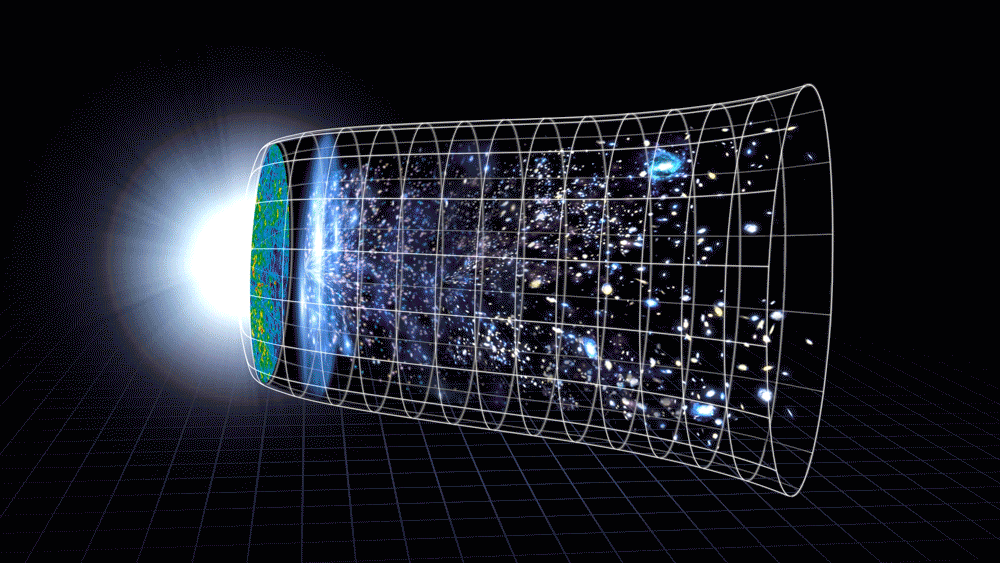telescope
James Webb Telescope Confirms the Universe Is Expanding Faster Than We Thought—and Scientists Still Don’t Know Why
The findings suggest that astronomers’ widely accepted cosmology models might be missing something—meaning the longstanding mystery known as the “Hubble tension” continues
Astronomers Detect the Smallest Main Belt Asteroids Ever Found by Repurposing a Technique for Exoplanet Discovery
An unusual approach to spotting tiny asteroids uses James Webb Space Telescope data in a boost for planetary defense research
See the Sombrero Galaxy Like Never Before, as the James Webb Telescope Captures It in Unprecedented Detail
The mid-infrared light image shows astronomical features that can’t be seen with visible light cameras or in previous infrared views—and in this shot, the galaxy doesn’t look much like a Sombrero anymore
Earth Bids Goodbye to Its 'Mini-Moon' as Astronomers Investigate Where Our Planet's Asteroid Companion Came From
Preliminary research suggests asteroid 2024 PT5, which stuck around Earth for almost two months, has lunar origins
Astronomers Spot a Galaxy Smashing Into Its Neighbors at 800 Times the Speed of a Fighter Jet
The collision in Stephan's Quintet was observed by WEAVE, a new instrument on one of the world's most powerful telescopes, in its first major scientific results
The Six Most Amazing Discoveries We’ve Made About Neptune
Despite the lack of a dedicated mission to the planet, scientists have learned plenty through ground observations and space telescopes
See the First Section of the Largest-Ever Cosmic Map, Revealed in Stunning Detail by the Euclid Space Telescope
The final 3D atlas of the sky will help scientists study dark matter and dark energy, which make up 96 percent of the universe but remain mysterious
Astronomers Are Watching for a Once-in-a-Lifetime Nova Explosion. When Will We See It?
A recurrent nova, known as the Blaze Star or T Coronae Borealis, is predicted to soon appear in the night sky. But the exact timing of the rare eruption remains unknown
Astronomers Discover a Small Exoplanet That's Our Cosmic Neighbor at Just Six Light-Years Away
Orbiting Barnard's star, the nearest solo star to Earth, the world is too hot to be habitable—a scorching 257 degrees Fahrenheit
Mysterious 'Wow!' Radio Signal Might Finally Have an Explanation—and No, It's Not Aliens
The infamous signal recorded in 1977 might have been a laser-like beam of radiation from a hydrogen cloud energized by a powerful, magnetic star, preliminary research suggests
NASA Retires Orbiting Telescope That Charted Asteroids for Over a Decade
NEOWISE, which looked for potentially hazardous objects in the solar system, received its last command on Thursday and will burn up when it re-enters Earth's atmosphere
See 25 Stunning Images of the Cosmos From the Chandra X-Ray Observatory as It Celebrates 25 Years in Space
Chandra, the world’s most powerful X-ray telescope, has been peering at black holes, stellar explosions and dark energy for a quarter-century
Astronomers Spot Rare, Mid-Sized Black Hole in Our Galaxy
The black hole, if confirmed, is in the star cluster Omega Centauri, about 17,700 light-years away, and it could hold lessons about how such structures are formed
This Nearby Exoplanet Is Hot, Dangerous—and Smells Like Rotten Eggs
Located about 64 light-years away from Earth, the world is the first place astronomers have detected hydrogen sulfide outside our solar system
This Revolutionary New Observatory Will Locate Threatening Asteroids and Millions of Galaxies
Beginning next year, the Vera C. Rubin Observatory will use the world’s largest digital camera to give us a whole new view of the universe
This Giant Cosmic 'Butterfly' Is a Planet-Forming Disk
New research has confirmed that the celestial object may be the biggest of its kind ever found
See Five Dazzling New Images of the Cosmos, Captured by Europe's Space Telescope
With its visible and infrared photography, Euclid—known as the "dark universe detective"—is helping astronomers better understand dark matter and dark energy
See New Images of the Horsehead Nebula, Captured in Striking Detail by the James Webb Telescope
The beautiful infrared imagery features one of the best known locations in space to study the evolution of stars and interstellar matter
A Stellar Collision Birthed the 'Dragon's Egg' Nebula, a Puzzling Structure in the Milky Way
The colorful cloud of gas and dust has a violent origin—and this explains the unusual traits of two massive stars within it, astronomers say
Astronomers Discover a 'Sleeping Giant' Black Hole in Our Galaxy—the Second-Closest Known to Earth
Called Gaia BH3, the dormant black hole is 33 times more massive than the sun, making it the largest recorded stellar black hole in the Milky Way
Page 1 of 4

:focal(680x457:681x458)/https://tf-cmsv2-smithsonianmag-media.s3.amazonaws.com/filer_public/d4/21/d4212094-2293-45fe-860d-7d8876b3c07a/mit_smallest-asteroid-01-press-scaled-1360x0-c-default.jpg)
:focal(1000x333:1001x334)/https://tf-cmsv2-smithsonianmag-media.s3.amazonaws.com/filer_public/16/bc/16bcc751-d19b-485e-9507-8ca7fdf959dd/sombrero_galaxy.png)
:focal(1000x752:1001x753)/https://tf-cmsv2-smithsonianmag-media.s3.amazonaws.com/filer_public/c3/1c/c31c0631-f2fd-423f-967c-94b667eae2b7/gettyimages-460713851.jpg)
:focal(360x298:361x299)/https://tf-cmsv2-smithsonianmag-media.s3.amazonaws.com/filer_public/f4/ef/f4efda1b-afbd-4e8c-84bc-2870798b2d68/8579b35a-a502-4104-8bf4-2ed061dd2c71_1_201_a.jpeg)
:focal(800x602:801x603)/https://tf-cmsv2-smithsonianmag-media.s3.amazonaws.com/filer_public/9b/18/9b18984c-3b32-454b-805f-ea596a685f96/main_web_neptune_voyager2_color_calibrated.jpg)
:focal(960x549:961x550)/https://tf-cmsv2-smithsonianmag-media.s3.amazonaws.com/filer_public/f4/7b/f47b89c4-4f38-4570-bc12-e5c5ecb54455/euclid_captures_core_of_abell_3381_galaxy_cluster_pillars.jpg)
:focal(512x288:513x289)/https://tf-cmsv2-smithsonianmag-media.s3.amazonaws.com/filer_public/e2/8c/e28ce239-68d6-493b-9150-a2b36b7b7779/nova.webp)
:focal(628x244:629x245)/https://tf-cmsv2-smithsonianmag-media.s3.amazonaws.com/filer_public/e0/f9/e0f960b8-4fa1-495c-882e-11b8331c75c3/imagen-eso.jpg)
:focal(307x258:308x259)/https://tf-cmsv2-smithsonianmag-media.s3.amazonaws.com/filer_public/48/6e/486ede95-127a-4131-ac00-feacc81cff2b/wowcl.jpg)
:focal(385x220:386x221)/https://tf-cmsv2-smithsonianmag-media.s3.amazonaws.com/filer_public/ec/8a/ec8a9a7b-cf9a-455c-a3d9-24d09762caef/pia17254_modest.jpg)
:focal(432x335:433x336)/https://tf-cmsv2-smithsonianmag-media.s3.amazonaws.com/filer_public/bf/5a/bf5a2818-a7ca-4084-83ba-822ca14df256/25th.jpg)
:focal(560x560:561x561)/https://tf-cmsv2-smithsonianmag-media.s3.amazonaws.com/filer_public/4d/05/4d051c14-9155-4062-8244-aa19edabf81b/hubble-omegacent-crop-stsci-01j1x1rzvdzs3hv0s5vbhc7x0r.webp)
:focal(3500x1983:3501x1984)/https://tf-cmsv2-smithsonianmag-media.s3.amazonaws.com/filer_public/1e/06/1e06b8cf-be0d-4df1-b7ab-53283700323d/hd_189733bs_atmosphere.jpg)
:focal(800x602:801x603)/https://tf-cmsv2-smithsonianmag-media.s3.amazonaws.com/filer_public/7f/3b/7f3baf46-149b-42af-83d7-fb8bc18ca3b3/main_noirlab2409b_web.jpg)
:focal(1800x1029:1801x1030)/https://tf-cmsv2-smithsonianmag-media.s3.amazonaws.com/filer_public/ac/67/ac6788b0-1d73-44f2-b968-a319ff7679e3/bigger_main_image_large.jpg)
:focal(4100x4100:4101x4101)/https://tf-cmsv2-smithsonianmag-media.s3.amazonaws.com/filer_public/41/9c/419c9894-6994-4251-83d5-8b16b640ac3b/euclid_s_new_image_of_star-forming_region_messier_78.jpg)
:focal(308x571:309x572)/https://tf-cmsv2-smithsonianmag-media.s3.amazonaws.com/filer_public/1d/b6/1db6560a-ff52-4a96-8352-098b9c19b152/horsehead2.webp)
:focal(1094x1354:1095x1355)/https://tf-cmsv2-smithsonianmag-media.s3.amazonaws.com/filer_public/29/3e/293ecff1-66d0-4e59-b1af-4e2a5e17339b/dragon1.jpg)
:focal(580x331:581x332)/https://tf-cmsv2-smithsonianmag-media.s3.amazonaws.com/filer_public/19/32/19321ec4-4ae9-4749-ad51-7ec75adbf27a/gaia1.webp)